#deep time
Text
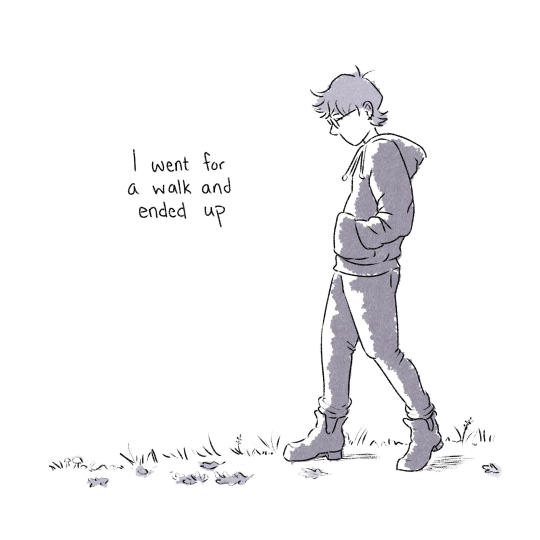

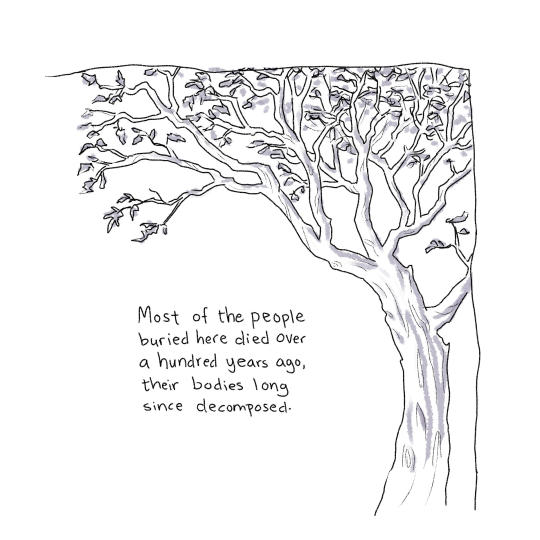







#journal comic#autobio comic#personal#comic#cemetery#death#deep time#graveyard#october#fall#autumn#mental health
1K notes
·
View notes
Text
Very cool interactive tool lets you track what your address was like at distinct times in the past (up to 750 MYA).

109 notes
·
View notes
Text
Absolutely no person needs more money than there have been years of the universe existing
frankly, no one needs even 1bil dollars, but the fact that there are many people who have more than 13.8 billion is **ridiculous**
241 notes
·
View notes
Text
489 notes
·
View notes
Text
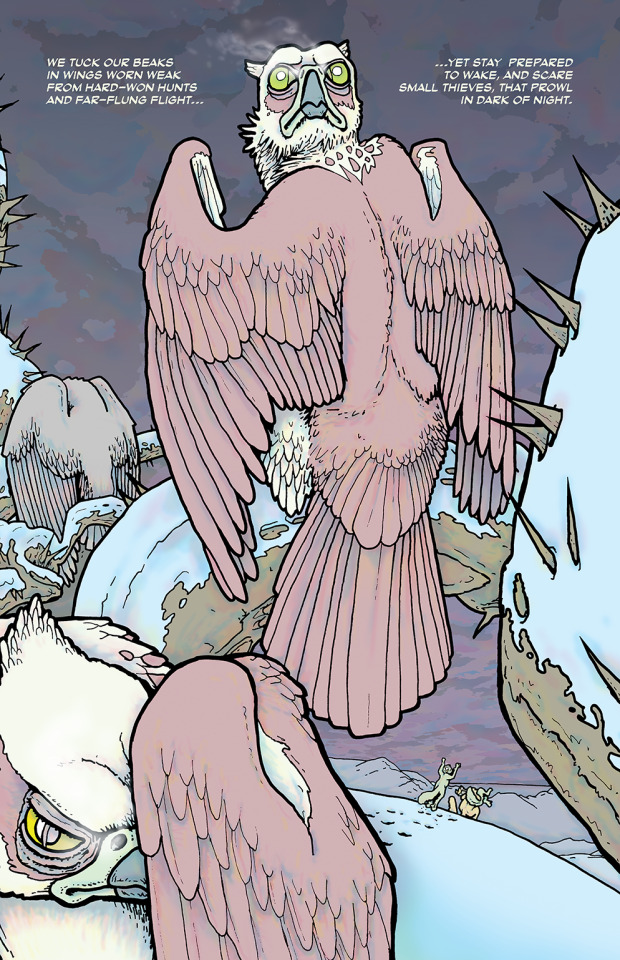
Inside back cover for Paleocene #4.
Read more about making this image.
Check out the campaign to print the comic book!
#paleontology#comic covers#comicart#comics#dinosaur#extinction#palaeontology#paleoart#prehistoric#biology#birds of prey#wild birds#primates#deep time
116 notes
·
View notes
Text
WORDPLAY WEDNESDAY: STRATIGRAPHY
Stratigraphy is an important piece of vocabulary for paleontology. It is a branch of geology concerned with the relative position of strata (rock layers) and their relationship to the geologic time scale. It is primarily used for sedimentary and igneous rocks (metamorphic rocks don't tend to layer).

Nicolas Steno, a Catholic priest, established the basis for stratigraphy by introducing the Law of Superposition, the Principle of Original Horizontality, and the Principle of Lateral Continuity.
In other words, all rocks are deposited horizontally,

are laterally continuous,
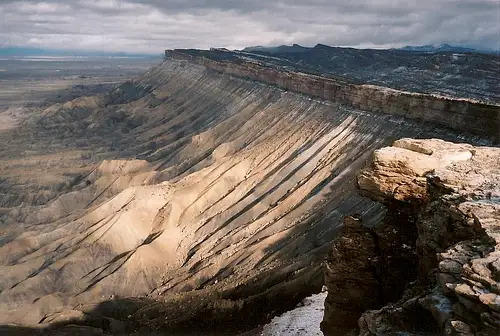
and the oldest rocks are on the bottom.

There are three major branches of stratigraphy: lithostratigraphy, biostratigraphy, and chronostratigraphy.
Lithostratigraphy looks at the variations in lithology (physical characteristics of rocks) such as vertical and lateral bedding, and reflects changes in depositional environment (river, lake, desert).
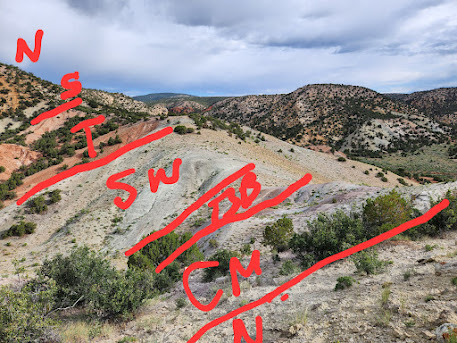
Biostratigraphy correlates rock layers using fossils. This is based off of William Smith's Principle of Faunal Succession.
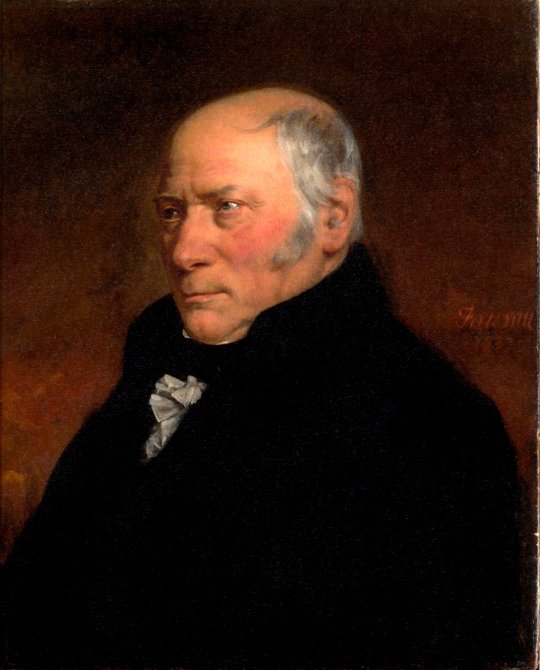
wherein fossils flora and fauna succeed each other in vertical layers and can be found over wide horizontal distances.

Lastly, there is chronostratigraphy which aims to put an absolute date (an actual number) rather than a relative date on rock strata. This means we can tell you where on the geologic time scale a formation belongs as shown below.
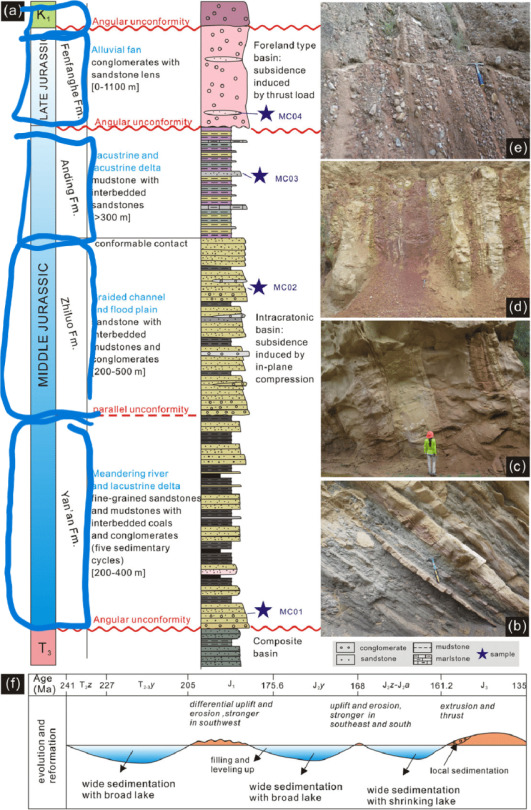
I personally love stratigraphy. It involves a lot of rigorous outdoor adventuring including hiking, mapping, drawing, picture-taking, and sample collection. In fact, I am currently working on a stratigraphic paper for our Evil Tree Bonebed. It's taken a few years but we should be done soon! I'll share when we are finally published!
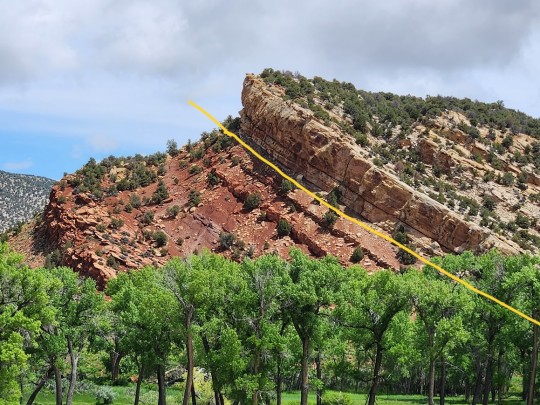
#paleontology#stratigraphy#lithology#lithostratigraphy#biostratigraphy#chronostratigraphy#deep time#index fossils#science#terminology#geology
18 notes
·
View notes
Text
youtube
4.5 Billion Years in 1 Hour, November 10, 2023
Sources & further reading: https://sites.google.com/view/sources-timeline/startseite?authuser=2
Earth is 4.5 billion years old - which is approximately the same amount of time it took us to create this video.
We’ve scaled the complete timeline of our Earth’s life into our first animated movie! Every second shows about a million years of the planet’s evolution. Hop on a musical train ride and experience how long a billion years really is. It’s the perfect background for your next party, a great way to take a break from studying, or a fascinating companion while you’re on the go … and our celebration of 10 years of kurzgesagt.
Kurzgesagt – In a Nutshell
#music#animation#history#deep time#kurzgesagt#in a nutshell#science#visualization#film#short#time#geology#astronomy#biology#landscape#art#digital#2020s#21st century#ecology
26 notes
·
View notes
Text
I do believe Crowley has a soft spot for the kind of knowledge that takes you to a whole different level of existential crisis but
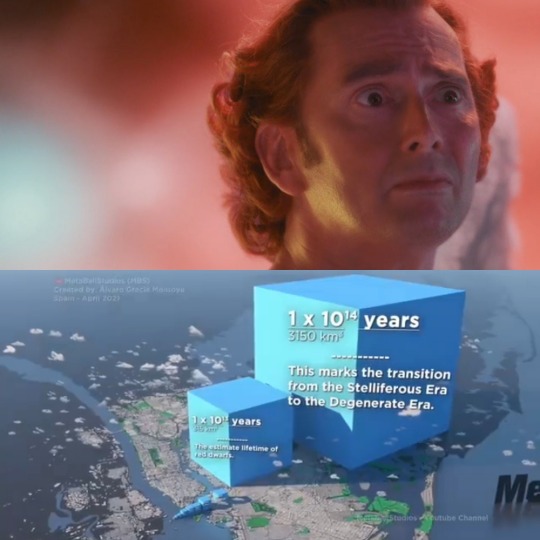

video below, if you have the headspace:
youtube
#good omens#good omens crowley#angel crowley#david tennant#Youtube#deep time#quantum tunnel#eternity
18 notes
·
View notes
Text
Introduction to 'Figured Stones' by Paul Prudence
All over the world are scattered stones that contain tiny kingdoms of petrified forests and model mountains. These stones, with their imagined societies of people, their animals and mythical creatures, await to do trade and form alliances. In each rock you may find exotic gardens, encrusted cliffs and the wrecks of ruined palaces. And every space is overrun by lichens, vines and exotic herbs. That ‘figured stones’ have been prized for their mimicry of miniature topographies of Lilliputian beauty is well attested by the great collections as far back as the T’ang dynasty. But even before that era of great adoration, these rocks had already weathered their apparitions into the human imagination. The pre T’ang literature tells of strange rocks in wild places that took the form of dragons, saints and even monsters. And the metaphysics of the microcosm found an early apogee in the emperor’s magic monuments made entirely from these stones.
Erosion, whose secrets are occluded only by time itself, has been busy; slowly dissolving rough rock into miniature worlds. The flow of water – that fertile archetype of time itself – has worn tiny rivers and valleys into stone, copying those processes of the greater world. Time flows through water and time flows through rocks, transforming them into mirror-worlds by attrition. And with more time these tiny streams in stone are turned into caves and tunnels which burrow down into the foundations of our own subconscious worlds. These sunless chambers form the perfect refuges for the dreamt-up denizens of our inflamed imaginations.
Nature has summoned its blind forces to create a fractal dimension, for each rock is a replica that exposes all the processes by which the world fully reveals – and comprehends – itself. As diminished echoes of the earth’s own features, figured stones offer us foci for studying a sense of planetary introspection. In depicting the greater essences of its smaller self, nature’s trick becomes a form of self-awareness – nature’s ‘that I am’ is cast into solid conscious form as the geological recollections of a former world are made manifest. The ghosts of stratified histories cascade through time and leave their marks in rock as totems or as scripts, or as tiny worlds, complete.
—Paul Prudence, Figured Stones: Exploring the Lithic Imaginary
#quote#Paul Prudence#Prudence#Figured Stones#stones#geology#nature#natural philosophy#philosophy#vibrant materialism#deep time#time#archeology#archaeology#rocks#rock
24 notes
·
View notes
Text
The use in science of common words for specialized meanings, or conversely for bastardized versions of scientific terms to enter common speech, are so common (witness the highly specific meaning of "impulse" or "flavor" in physics, the vulgar use of "energy", "evolution", or "quantum", the use of "life" and "death" for inanimate objects such as stars, or my own pet peeve, the use of "exponential" to mean that a number is bigger than another number) that one may be surprised to realize that "being related" means in evolutionary biology exactly the same thing it means in common speech.
When we say "whales are related to hippopotami", no metaphor or specialize meaning is involved: the word "related" has exactly the same meaning as when I say "I am related to my cousin".
Simulations suggest that, thanks to population mixing, the most recent common ancestor of all (currently living) humans lived between 2000 and 5000 years ago. That means that any living human being is at most a 200th cousin of any other, even if one is an Inuit and the other a Samoan. In the same sense, any human is approximately...
350,000th cousin of a chimpanzee;
1.6 millionth cousin of a baboon;
7.5 millionth cousin of a lemur;
40 millionth cousin of a mouse;
50 millionth cousin of a dog, or a whale, or a bat;
90 millionth cousin of a kangaroo;
250 millionth cousin of a bird or a lizard;
370 millionth cousin of a bony fish;
470 millionth cousin of a lamprey or hagfish;
800 millionth cousin of a starfish;
1.3 billionth cousin of a housefly or an earthworm or an octopus;
3.3 billionth cousin of a sponge;
1 trillionth cousin of a mushroom or an amoeba;
1.4 trillionth cousin of a pine tree or a blade of grass;
3.2 trillionth cousin of Leishmania and Trypanosoma;
and perhaps 6 trillionth cousin of bacteria.
(calculations based on the assumption that average generation time is 25 years for modern humans, 15 years for other apes, 5 years for other primates, 1 year for earlier vertebrates, 30 days for an earlier invertebrate, and 4 hours for a unicellular organism)
14 notes
·
View notes
Text

1916: Arthur Clarence Pillsbury on the hood of this Studebaker Six on Glacier Point in Yosemite Park, California. A local carpenter built a trestle so the car could be positioned. :: [Historic Photographs]
* * * *
“Something I heard an archaeologist say in Oslo about deep time returns to me: Time isn’t deep, it is always already all around us. The past ghosts us, lies all about us less as layers, more as drift. […] The problem is not that things become buried deep in strata – but that they endure, outlive us, and come back at us with a force we didn’t realise they had. […] We all carry trace fossils within us – the marks that the dead and the missed leave behind. Handwriting on an envelope; the wear on a wooden step left by footfall; the memory of a familiar gesture by someone gone, repeated so often it has worn its own groove in both air and mind: these are trace fossils too. Sometimes, in fact, all that is left behind by loss is trace – and sometimes empty volume can be easier to hold in the heart than presence itself.”
— Robert Macfarlane, Underland: A Deep Time Journey
[exhaled-spirals]
#Historic Photographs#Studebaker#1916#Precarity#Yosemite Park#Robert Macfarlane#time#deep time#exhaled-spirals#quotes
29 notes
·
View notes
Text


New in the store: DEEP TIME!
Thousands and millions of years in the past our ancestors invented civilization, survived mass extinction events, and evolved into new forms...thousands and millions of years in the future they might stand on new worlds and travel to the stars...but what legacies did (will) they leave behind? Meditate on the vastness of time and the universe in this melancholy, formalist and experimental minicomic.
Deep Time is an accordion-fold comic that has been glued into a circular shape, so the story can be read backwards and forwards from any starting panel. Deep Time comes folded inside an envelope and is secured with a paper band. The envelope has instructions for unfolding and reading the comic on the back. Each comic is hand-printed and assembled by me.
Get it here for $6!
#my artwork#mini comics#zines#accordion book#risograph#deep time#time travel#paleoblr#space#space exploration#paleolithic#book making#I hope the pictures do some justice to this object
50 notes
·
View notes
Text
I recently finished reading Marcia Bjornerud's Timefulness: How Thinking Like a Geologist Can Help Save the World. In it, she explores how geology introduced us to the idea of deep time, where we consider our place in the world not merely in the few thousand years of human civilization, or even the couple hundred thousand years of our own species' existence, but instead the seemingly unfathomable stretch of 4.5 billion years in which the Earth has been spinning.
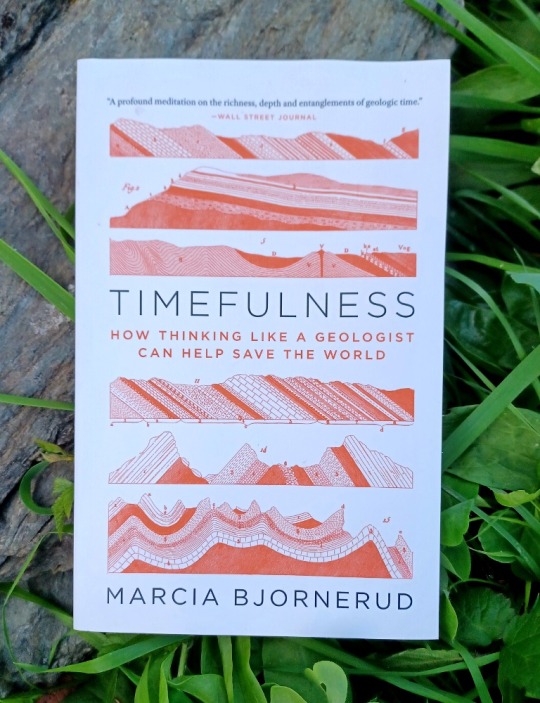
It's not just a matter of making us humble, though that's certainly a piece of it. More importantly, I think, is the context we find ourselves in when we see ourselves as one young species existing at about two-thirds of the way through the Earth's window of opportunity to support life. That's right: life has existed for a little over four billion years. And in another two billion years, the sun will have expanded enough to evaporate all the water on the planet, rendering life as we know it impossible. Anything that might survive that won't be able to get through the increased greenhouse effect as the Earth's surface heats up dramatically.
Sure, that can be depressing to think about. But it's not two billion years from now. We are in this moment now, with most of us are so finely focused on profit for the now (or just surviving paycheck to paycheck) that the idea of delayed results is practically anathema. Obviously we can't just force everyone to expand their understanding of time. A lot of people have to get over the fear that if they don't acquire and everything they can get right now, they won't have enough in the future. Look at how many argue against investing resources into the collective younger generations because something about “Well, they shouldn't get handouts and nobody gets anything for free”; asking them to look at the cumulative positive effects of a more highly educated population of adults in the future won't break most of them out of their selfishness.
Bjornerud is asking us to step out of our little time bubbles into a scarier, more exhilarating worldview in which we are not the pinnacle of evolution or the chosen species—a timeline that is nearly terrifying in its immensity. But we face that existential fear because just as time has stretched on for billions of years before us, so it will stretch on after us for billions of years, and some of those billions will still feature living beings.
It takes courage to do this. And there's also a certain level of compassion and empathy that is required to really consider and act on the reality that what we do now WILL have repercussions for the future (to say nothing of the impacts today.) The Haudenosaunee (Iroquois) concept of considering how today's decisions will affect those seven generations from now is just one example of people consciously choosing to exercise that empathy for people and other beings who don't even exist yet. It means we have to stop centering ourselves in every choice we make, and make sacrifices not only for those we don't know and aren't related to, but whom we will never get to meet.
We are setting this planet up for massive changes that will have ramifications in the thousands—and in some cases tens of thousands—of years. That's barely a heartbeat in geological time, but still time enough for a mass extinction that could include our own species. Will enough of us find our courage and compassion to fight for a future we won't live long enough to be part of? Will we challenge our stubbornly myopic tendency to sacrifice everything on the altar of Profit Now? I'm ever the optimist, and I think it's still possible. Part of that is rethinking how we think of time and its passing, and Timefulness invites us to do just that.
#climate change#global warming#geology#environment#environmentalism#deep time#deep ecology#ecology#conservation#extinction#prehistoric#prehistory#Earth#planet Earth
176 notes
·
View notes
Text
re: that periodization post, @aeide-thea, your tags --
#right like. i personally would find it helpful to just give dates as opposed to periods but like #as alf has discussed many times BC(E) is not remotely neutral either #so probably the best you can do IS to double up as OP says #to like. trouble the idea of ANY dating system as neutral #they all coexist and are sited in particular cultures/ideologies #truly like. my nonexistent kingdom for a framing of history that explicitly made cross-regional connections tbh #like 'in AUC 2603/AM 5610/AD 1850 X was happening in china and Y was happening in russia and Z was happening in mexico' etc etc #i can and should work this out myself at some stage but. very easy to be lazy about updating yr sense of these things as an adult :/
anyway thinking about this is so funny and charming to me because this is absolutely what ancient historians did BEFORE standardized numbering of years (and its modern imposition back into history) - read an article relatively recently about how herodotus provides years from across a broad range of locales in order to give people from a wide variety of places a sense of when stuff is supposed to be happening, making his storytelling slightly less location-locked...
24 notes
·
View notes
Text

Chart with PhyloPic silhouettes from an essay in the upcoming comic book, Paleocene #4. These are lineages that survived the Cretaceous–Paleogene extinction event but died out before the Holocene Epoch (which is almost too brief to be visible here—it is a thin sliver atop the Pleistocene). Figures are not to scale, and do not line up perfectly to lineage extinction dates, just to epochs. This chart is available under the CC BY-SA 3.0 license.
For more information about the silhouettes in the chart, see: https://www.phylopic.org/.../7dc1ae186d11d8c2ad9f502fc47d...
For more about the comic book, see https://www.kickstarter.com/projects/keesey/paleocene-4-comic-book
#extinction#paleontology#dinosaur#paleoart#palaeontology#prehistoric#biology#zoology#botany#extinct animals#extinct species#extinct birds#cenozoic#sciart#palaeoblr#deep time#geologic time
72 notes
·
View notes
Text
Today on Throwback Thursday: Adam Sedgewick

A British geologist and an Anglican priest, Sedgewick would reinvent how we looked at geologic time. He was born in 1785 in Yorkshire to an Anglican vicar, and went to the University of Cambridge for math and theology (how he ended up in geology is beyond me).
At some point he began to study the rocks of the British Isles and Europe where he came up with a classification system for Cambrian rocks as well as Carboniferous and Devonian rocks. In fact, he got involved in something called the "Great Devonian Controversy"
Basically, we had this guy, Henry de la Beche
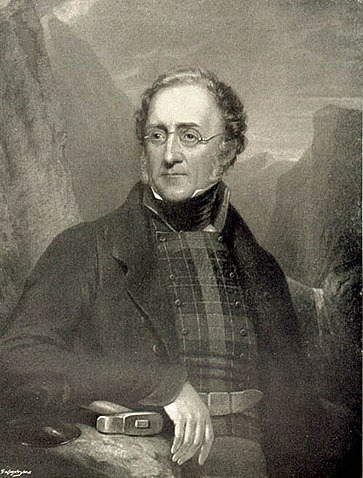
who had these plant fossils in a greywacke that he believed was older than the Carboniferous plant fossils also found in a graywacke (don't worry about what a graywacke is, just know it's a rock) and that the method of dating used was invalid due to the different depths these fossils were found at.
Then, we had this other guy, Roderick Murchison,

who said, "no, you're doing wrong, Sir." He believed they were near the top of the strata just like the other fossils.
Eventually, the de la Beche agreed with him but said there was still insufficient data because a red sandstone layer was missing from in between. Sedgewick hopped in to help Murchison and the two actually found a similar layer in Russia and thus the Devonian Period was born.
Sedgewick also made some advancements with metamorphic rocks. He was the first to recognize the difference between stratification,

jointing

and slaty cleavage.

11 notes
·
View notes